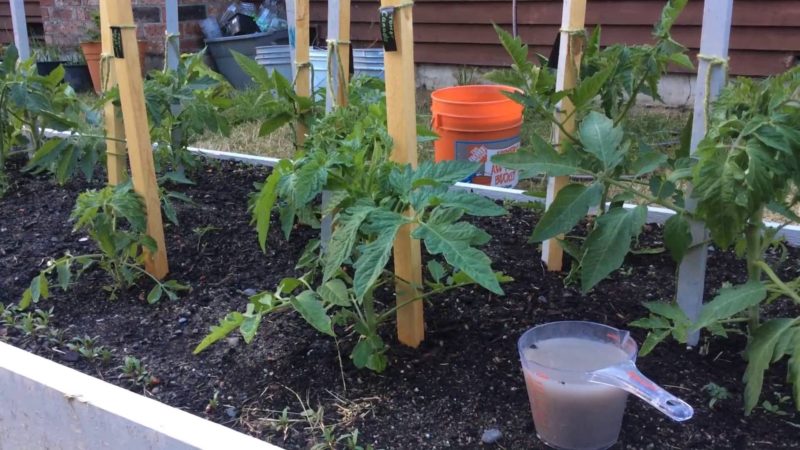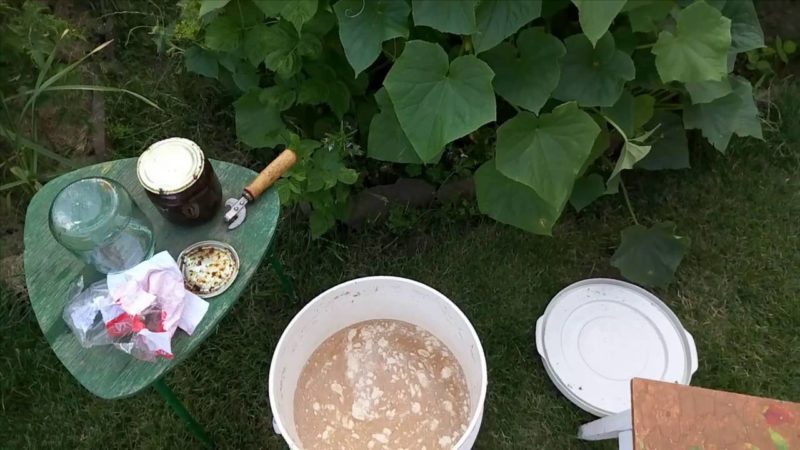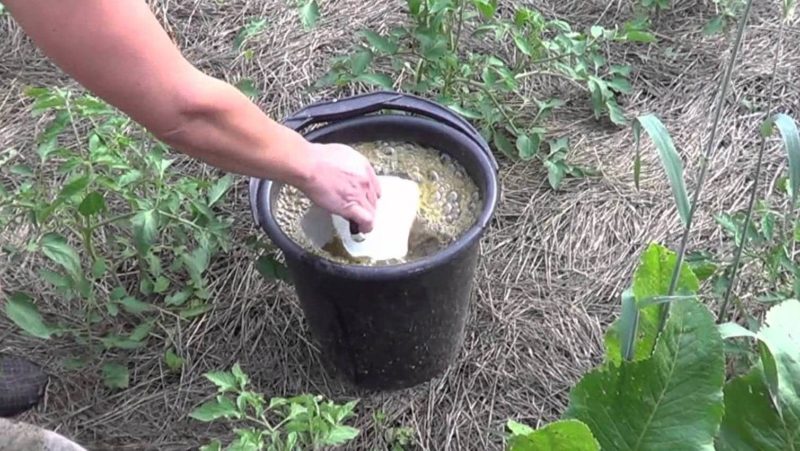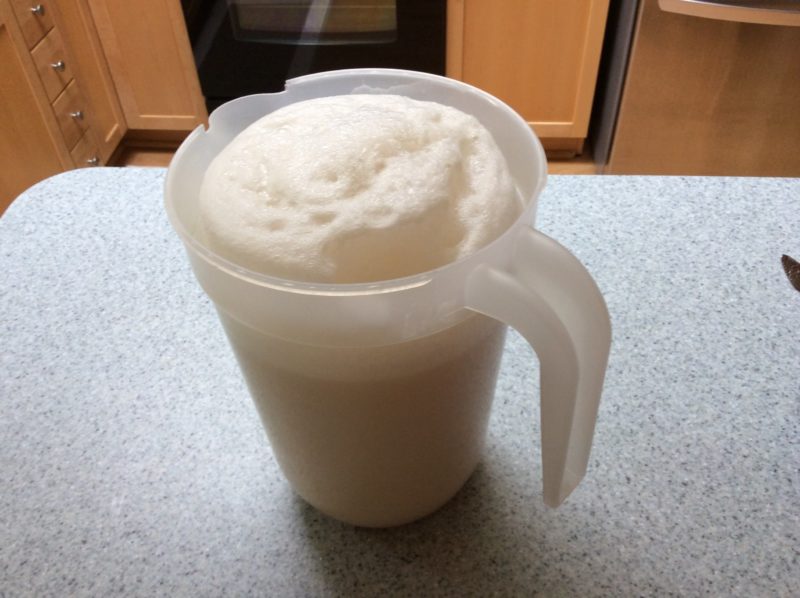In the vegetative period, plants are especially in need of top dressing. Yeast does an excellent job of this. By stimulating the microorganisms contained in the soil, they improve its fertility and contribute to improved nutrition of vegetables, you only need to figure out how to prepare yeast as a fertilizer for plants.
Material Content:
Useful properties of yeast for plants

Yeast is a group of unicellular fungi that live in an organic environment. Their mass consists of 75% water and 25% solids, including proteins, carbohydrates, amino acids, minerals, fats and nitrogen.
Yeast nutrition has a certain effect on vegetation:
- The high content of vitamins, macro and micronutrients in yeast top dressing makes the plant more resilient and prolific.
- Regularly watering the seedlings with a similar composition, it will allow it to easily transfer the transplant, balance and accelerate growth, preventing the stretching of the stems. In addition, the yeast solution has a positive effect on the development of the root system. According to the observations of experienced gardeners, root formation occurs on average 10 days earlier. This is due to the accelerated processing of organic substances with the release of nitrogen and phosphorus, which positively affect the root. Such a plant gives a large number of shoots and greenery.
- For lovers of strawberries, yeast will become an indispensable fertilizer, since they significantly accelerate the formation and growth of outlets.
- Natural bacteria help develop immunity in plants to various diseases and pests.
What plants like yeast fertilizer?

Thanks to vitamins, useful substances and minerals, yeast is suitable for fertilizing almost all types of vegetation, including flowers, vegetables and fruits. The substance promotes an improved crop without harming the plant and human health.
Despite the large number of positive factors, the composition can not be used for watering potatoes, onions and garlic.
Yeast fungi are characterized by a high level of vitality and retain their useful qualities even after rain, large temperature differences and physical effects. However, fungi are afraid of aggressive bacteria that can inhibit their development.
How to cook yeast dressing - recipes

This useful product is a real find for gardeners. In addition to a huge list of useful properties, yeast fertilizer is very easy to prepare. To do this, you can purchase yeast in raw, dry or packaged form. If it is not possible to buy a finished product, infusions from any stale flour products will become an alternative.
It is interesting: agave plant
To improve the nutritional properties of the infusion, the raw materials are mixed with various herbs, foliage, hops, potato tops. To get the best result, you should wait for the fermentation process, during which a large amount of nitrogen is released. It is nitrogen that accelerates the formation of the root system.
Universal yeast fertilizer for the entire garden
To prepare this recipe, you should purchase a large plastic container.
The composition of the fertilizer includes:
- three loaves of stale bread;
- two liters of ash;
- 100 grams of yeast;
- one liter of fermented jam;
- 10 tbsp nitrofoski;
- 3 tbsp urea.
The last two ingredients are optional, but their content will increase the nutritional properties of the mixture. Put all the components in a barrel, and add it to the middle with weeds or any other grass. Next, add water to the very top, mix thoroughly, cover and leave for 7 days. After the set time, you can use the infusion, pre-mixed with water in a ratio of 1:10.
The prepared solution can be used for all plant crops, with the exception of the above. Cucumbers and zucchini, fertilized with yeast, give twice the number of fruits and are not susceptible to disease. Carrots and beets acquire a sweet taste. Victoria and strawberries give a good harvest without suffering from the adversity of gray rot, fatal to these berries.
Fertilizing vegetable crops: tomatoes, melons

Yeast fertilizer of tomatoes and gourds began to gain popularity back in the 70s. Tested for decades, top-dressing recipes have a large number of nutrients. The first watering of tomatoes is carried out a week after planting in an open area or greenhouse at the rate of 500 ml per bush. The next time the plant is fed before flowering, increasing the amount of infusion three times.
Fertilizer Recipe:
- fresh yeast - 30g;
- manure hood - 0.5l;
- wood ash - 400g;
- sugar - 5 tbsp. spoons;
- a bucket of water.
The components are thoroughly mixed together. Before use, 1 liter of solution is diluted in 10 liters of water. In view of the manure included in the composition, do not apply fertilizer directly under the root. Watering is necessary in small portions around the trunk.
The use of yeast accelerates the growth of tomatoes, which will become noticeable in a few days. The bushes will become taller and the leaves brighter and larger.
Representatives of gourds respond well to yeast foliar fertilizers. They are prepared according to the above recipe, but they are not watered under the root, but the leaves are sprayed. This method helps the improved absorption of nutrient microorganisms.
Fertilizer for cucumbers
You should not often use fertilizers from yeast fungi, otherwise there will be an excess of nitrogen in the soil and a lack of potassium. To avoid such consequences when watering, it is worth adding wood ash to the composition.
For feeding cucumbers, you can use a simple recipe: fill 2/3 of the bucket with dry rye bread, add water to the edge and crush the mixture with oppression. Leave the container in a warm place for a week. You can not water cucumbers with concentrated solution. Ferment is mixed with water at a rate of 1: 3 and 500 ml is added for each root. Such top dressing is carried out twice a month, but no more than 5 times during the summer.
Sourdough on bread and yeast
You will need a 10l bucket, crusts of stale bread, one pack of dried yeast, a glass of evil and a glass of sour milk. The components are mixed together, then the container is wrapped and left in a warm place for fermentation for a week. Twice a day, leaven should be mixed.
Hop Fermentation

Add a glass of fresh or dried hop cones to hot water, boil for 60 minutes and strain. After allowing the broth to cool, strain it through cheesecloth, add 2 tablespoons of sugar and 4 tablespoons of flour. Stir well and put in a warm place for two days. After the required time, add 2 grated potatoes to the mixture and leave for another day, after which the composition is ready for use.
Possible harm to the plant caused by yeast and consequences for humans
In order for yeast plant nutrition to bring exclusively benefits, it is worthwhile to responsibly approach its use.
To do this, use the recommendations:
- Do not water too often. The best time for feeding is the end of spring or the beginning of summer, as well as during planting in the ground. The use of a highly concentrated solution is allowed no more than three times per season. At a lower intensity, the number of irrigations can be increased, but not more than twice.
- The use is permissible for diseases in garden crops.
- So that the soil is not depleted, yeast should be applied along with wood ash containing calcium and potassium.
- Do not leave the finished mixture in storage, it is better to use it immediately.
- The effect of yeast is activated in warm water, so top dressing should be done in heated soil.
Proper and moderate use of yeast will allow you to grow large and healthy crops on your site that will delight you in the harvest season.












